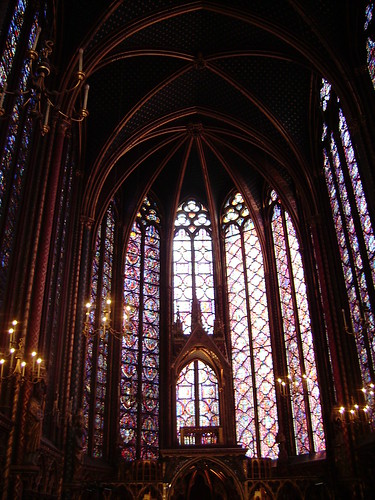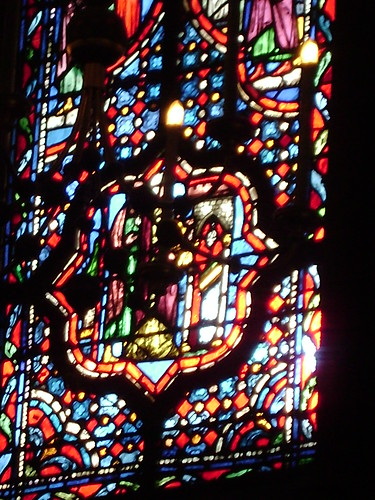
Now back in the day--waaaaay back, that is--this was the palace of the king of France. Built on an island in the middle of the Seine, this is the castle of a king who is sleeping with one ear cocked for the sounds of invasion.

Sure, some of the bits were modernized as France stabilized, but this is still no fairy tale palace. This is the palace of able-bodied men sleeping with their swords to hand, in case they have to hack up some Visigoths or other uninvited guests.
Eventually, the building outlived its purpose and the last king (Louis XII?) who lived there tossed the keys to a caretaker. "Here ya go, it's all yours. Keep the parties modest, and turn out the lights when you go to sleep at night. I'm off to someplace less damp."
The caretaker--the concierge--became what the building was known for, hence its name. Time passed, and the Conciergerie was shoved back into prominence with the French Revolution, as well as the Terror. Many of the victims of the guillotine were kept overnight in the cells of this castle. In the morning, they were bound with hands behind their backs, their hair cut above their necks, then placed in the cart that took them to their execution--in what is now called Place de la Concorde. (Is irony an especially French thing?)
Marie-Antoinette spent the last days of her life here in a small cell. By this time her husband had been executed, her two remaining children taken from her, and she was tried and accused of every nasty thing that could be imagined, including incest with her own son. There was only one possible outcome, and she left the Conciergerie to her death.
Okay, so that's pretty grim. Which is why Sainte-Chappelle is such a contrast.
Built by Louis IX in the 13th century, it was the private chapel of the king and household, and was built to house the holy relics Louis purchased from a cash-starved emperor of Byzantium. Like a cereal box promotion, Louis managed to collect the whole set, and obtained the Crown of Thorns, the shaft and head of the spear that pierced Christ's side, a piece of the True Cross, a vial of Christ's blood, the sponge used to offer vinegar to Jesus, Christ's burial shroud, the top of the head of John the Baptist, and hair of the Virgin Mary. Well, if you are going to own all of that, you'd better have a nice place to keep it, right?

Oh, yeah. That'll do.
The thing is, it's got rather a tiny footprint, and is probably taller than it is long. It's like a jewel box of a chapel, and was designed for the king's personal worship, as well as that of his closest court members. Members of the household didn't come upstairs, but worshipped down in the undercroft.
Each of the window arches depicts a book from the Bible, and can allegedly be "read" if one is familiar with medieval conventions in Biblical representation. Which I am not. Which is why after being bowled over by the beauty and intricacy of these windows, I went back down into the undercroft to buy a Great Big Book of Window Explanations. Which we had to ship back here along with the other 40 pounds of books we bought, and hasn't yet arrived.

You can see the elaborate designs: figures, tableaux, geometric shapes, done in only a few colors with grisille detailing for the faces and drapery.

A closer look.
The windows start with Genesis at the back of the church on the left hand side, and move to the front, around the altar:

culminating in the magnificent rose window depicting Revelations, the apocalypse.

This (of course) faces west, so when the sun sets, it illuminates The End Of The World! In Technicolor!
I was going to end this with some witty quip, but the witty quip delivery boy is late. Tant pis.

No comments:
Post a Comment